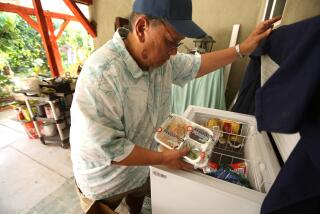THOUSAND OAKS : Recycling of Yard Wastes Supported
- Share via
Nearly all Thousand Oaks residents who are participating in a pilot program to recycle yard wastes want the program to continue, but many do not want to pay more for it, according to a recent city poll.
Carolyn Greene, a city waste planner, said 96% of the 480 residents who responded to the poll said they liked the program and wanted it to continue. Greene said the City Council on Tuesday will be asked to extend the program for six months, until June 30.
The program, which started Sept. 1, covers about 1,500 homes. Under the program, city garbage haulers collect grass clippings, tree trimmings and other yard wastes and take them to The Worm Concern, a Simi Valley company that uses earthworms to transform organic waste into mulch.
The effort is a response to a recent state law requiring cities and counties to find ways to divert 25% of their waste from landfills by 1995 and 50% by 2000. Greene said that as much as 40% of the city’s residential waste is yard waste.
The city is running variations of the recycling program in three neighborhoods. In one neighborhood, homeowners are asked to provide their own containers. In another, the city provides the container and collects the yard wastes every week. In the third neighborhood, the city provides the containers and collects biweekly.
Greene said that more than 60% of residents participate in the recycling program in neighborhoods where the city provides the container. Where residents provide their own containers, the participation rate is only 38%.
The program collects 20 to 24 tons of trash a week, which is below initial estimates, Greene said.
She said costs are a concern. The Worm Concern charges less to accept the waste than landfills, but collection costs are higher. Each container, for instance, costs $60. A special garbage truck, which costs as much as $70 an hour to operate, is needed to collect the yard wastes. By extending the pilot program, Greene said the city will get better cost estimates for the program and could monitor use during the spring growing season.
More to Read
Sign up for Essential California
The most important California stories and recommendations in your inbox every morning.
You may occasionally receive promotional content from the Los Angeles Times.













